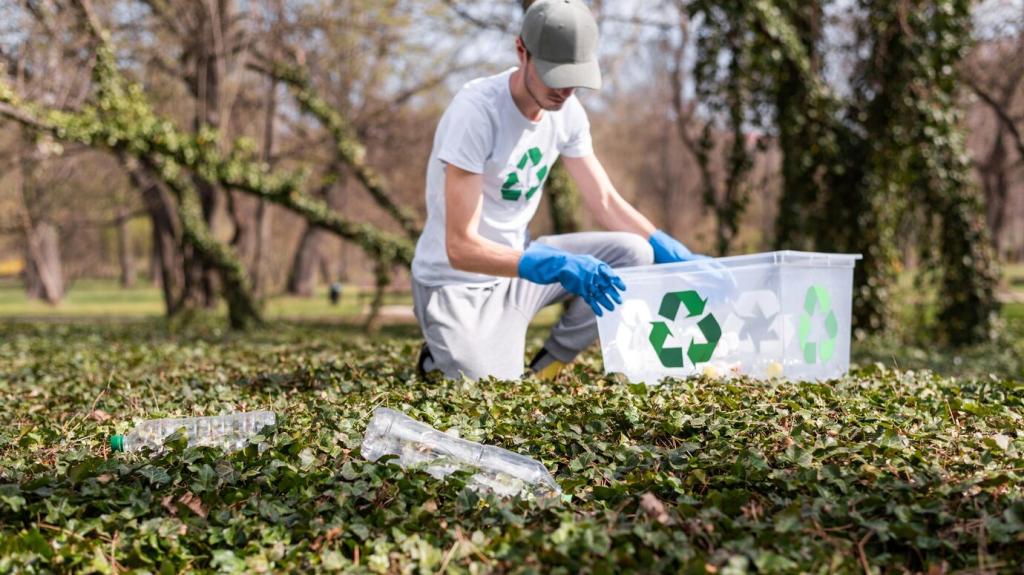Eco-Friendly Techniques for Maintaining Wood Furniture
Sustainability isn’t just about the materials we use—it’s also about how we care for the items we already own. Maintaining wood furniture with eco-friendly techniques not only preserves its natural beauty and longevity, but also reduces our environmental impact. By making mindful choices in cleaning, restoration, and protection, we can honor traditional craftsmanship while supporting a healthier home and planet. Discover how gentle, natural approaches and conscious habits can keep your furniture looking timeless for generations.
Choosing Sustainable Care Products
Plant-Based Cleaners
Plant-based cleaners are an excellent eco-friendly option for wood furniture care. They are composed of natural ingredients such as citrus oils, olive oil, or vinegar, which effectively clean surfaces without the use of harsh chemicals. These cleaners are biodegradable, meaning they break down safely after use and do not contribute to pollution. Furthermore, they help retain the wood’s natural finish and color, ensuring a gentle yet thorough cleaning. When choosing a plant-based product, look for brands that are certified for organic or environmentally respectful standards. Aside from environmental benefits, these cleaners often provide a refreshing scent and do not leave behind harmful residues, making them healthier for homes with children or pets.
Beeswax and Natural Oils
Using beeswax and natural oils such as linseed, tung, or walnut oil provides deep nourishment for wood furniture. These substances penetrate the wood fibers, replenishing moisture and bringing out a warm, rich sheen without relying on synthetic additives. Beeswax serves as a natural sealant, protecting surfaces against dust and minor water exposure. Pure, unrefined oils are often harvested in sustainable ways and are renewable resources. Applying these treatments prolongs the life of the wood and enhances its resilience. Unlike petroleum-based products, natural oils and waxes do not emit harmful volatile organic compounds (VOCs), supporting better indoor air quality and safer living environments.
Minimal Packaging and Refillable Options
The packaging of furniture care products can significantly impact the environment, particularly when single-use plastics are involved. Opting for brands that offer minimal, recyclable packaging or provide refillables is a crucial step toward sustainability. Some companies offer concentrated versions to reduce transport and packaging waste, while others use reusable containers made from glass or recycled materials. Refilling stations at local stores enable customers to reuse their bottles, cutting down on landfill contributions. By choosing these eco-conscious packaging options, individuals play an active role in lowering their waste footprint while maintaining beautiful, long-lasting wood furniture.
Gentle Cleaning Methods
Damp Cloth Wiping
A simple, sustainably-sourced cotton cloth, lightly dampened with water, is often all that’s needed for daily dusting and light dirt removal. This method avoids the use of disposable wipes and chemical sprays, making it an eco-conscious choice. The absence of harsh cleansers ensures the finish stays intact and the wood isn’t stripped of its natural oils. It’s important to wring out the cloth thoroughly before using, as excess moisture can seep into the cracks and cause swelling or mold. Following up with a dry cloth prevents water stains and keeps the surface lustrous. Adopting this method as a regular practice maintains cleanliness and longevity without environmental harm.
Spot-Cleaning Stains
When faced with spills or marks, prompt and focused spot-cleaning is essential to prevent damage without resorting to abrasive chemicals. Use a blend of mild, biodegradable soap and warm water, applying the solution with a soft cloth only to the affected area. This ensures that the cleaning agents have minimal contact with the wood’s finish and do not disrupt the broader protective layer. Natural sponges or brushes with soft bristles can help dislodge grime without scratching. Once the stain is removed, gently blot the area dry, leaving no residue behind. This approach protects both the look and structural integrity of the furniture while keeping chemical runoff out of environmental systems.
Avoiding Excess Water
Using excessive water during cleaning is a common mistake that can lead to warping, cracking, or discoloration in wood furniture. Eco-friendly maintenance stresses the importance of minimal moisture, as water can be particularly damaging over time. It’s best to use a moistened rather than saturated cloth and to work in small sections, drying immediately after cleaning. Treating the wood gently and quickly ensures that it remains stable and beautiful, and it reduces the risk of mold or mildew forming in joints. This water-conserving approach is effective for preservation and aligns with broader environmental conservation efforts.
Natural Restoration for Worn Surfaces

DIY Natural Polishes
Homemade natural polishes, crafted from ingredients like olive oil, lemon juice, or beeswax, are eco-friendly solutions for bringing life back to tired wood surfaces. These mixtures nourish and protect wood without introducing any hazardous substances. Creating your own polish allows control over the purity of ingredients and reduces dependency on commercial products with unnecessary additives or single-use packaging. Regular application restores shine, conceals small imperfections, and enhances the unique grain patterns of the furniture. Natural polishes are not only effective, but also affordable and gentle on both furniture and the environment.

Gentle Sanding and Surface Repair
When scratches or dents mar the surface of wood furniture, gentle hand sanding with fine-grit, eco-friendly sandpaper offers a targeted way to smooth out imperfections. Unlike aggressive sanding with electric equipment, this method preserves the majority of the original material and prevents excessive dust or pollution. Sanding should be followed by a wipe-down with a damp cloth to remove residue. Once the area is smooth and clean, reapplying a natural finish, such as plant-based oil or beeswax, seals and protects the repair area. This process restores both appearance and durability without harmful chemicals, ensuring your furniture ages gracefully.

Reviving Dull Finishes
Exposure to sunlight, moisture, and daily use can cause wood finishes to lose their original sheen. Eco-friendly restoration centers on using all-natural solutions—like a thin coat of linseed oil or a natural paste wax—to revive and seal the wood. Application is simple, often involving massaging the product in with a soft cloth and buffing gently to reveal a refreshed glow. These techniques nourish the wood without clogging its pores, and they help maintain breathability. Regular reviving treatments minimize the need for more invasive repairs down the road, extending the life of the furniture while supporting a toxin-free home environment.

Natural Barriers and Covers
Using cloth runners, mats, or coasters made from organic or recycled materials helps create a buffer between wood furniture and damaging elements like hot dishes, water rings, or direct sunlight. These accessories are reusable and can be washed rather than discarded, minimizing waste while protecting valuable finishes. Draping a naturally dyed fabric cover over a tabletop when not in use also shields it from dust and UV exposure. Natural barriers add a touch of style while serving an important functional role, reducing the need for frequent touch-ups or repairs caused by preventable surface damage.
Strategic Furniture Placement
The placement of wood furniture within a room greatly affects its exposure to damaging factors. To avoid long-term damage, it’s wise to keep wood pieces away from heaters, direct sunlight, and sources of moisture like windows or bathrooms. This not only maintains the wood’s structure and appearance, but also reduces the demand for intensive maintenance procedures that have higher environmental costs. By arranging furniture carefully and monitoring environmental conditions, it’s possible to preserve its quality using little more than mindfulness and intention. This simple practice goes a long way in ensuring the longevity of each piece.
Consistent Climate Control
Fluctuations in humidity and temperature can cause wood furniture to expand, contract, or crack, which is why consistent indoor climate control is key. Eco-friendly approaches to climate control might include the use of dehumidifiers with low energy consumption, opening windows for natural airing, or using indoor plants to regulate moisture naturally. Maintaining a stable environment ensures that wood remains strong and beautiful over time, and it reduces the likelihood of needing resource-intensive repairs. This method not only saves energy, but also provides a healthier indoor atmosphere for people and pets.
Preventing Pests Naturally
Maintaining Clean Surroundings
Regularly vacuuming, dusting, and keeping areas around wood furniture free from crumbs and debris are simple, effective ways to make the environment less attractive to pests. Without food sources and hiding spots, insects are far less likely to take up residence in wood joints or underneath tables and chairs. Adopting a habit of frequent, mindful maintenance prevents infestations before they start and eliminates the need for chemical pest control. Clean surroundings support not only pest prevention, but also a healthier, more inviting living space for everyone.
Natural Pest Repellents
Natural pest repellents, such as essential oils from cedar, eucalyptus, or lavender, present a non-toxic defense against wood-boring insects. These oils can be mixed with water and sprayed onto furniture or applied to cotton balls and left inside drawers and cabinets. Their strong scents deter pests without harming pets, children, or beneficial insects. Using these alternatives respects the ecosystem and keeps toxins out of the air and soil. Periodic reapplication is advised, but the process is simple and supports the longevity of wood furniture without resorting to harsh chemicals.
Regular Inspection for Early Detection
Early detection of pest activity enables swift, minimal intervention using eco-friendly methods. Monthly checks for fine sawdust, pinholes, or subtle changes in the wood’s texture help catch infestations at their earliest stages. When discovered quickly, solutions like freezing affected items, applying natural oils, or physically removing pests can be effectively employed. This monitoring routine requires very little time or energy but significantly reduces the risk of permanent damage and the need for drastic treatments. Staying vigilant is an environmentally responsible way to preserve your treasured pieces.

Salvaging and Reusing Materials
Rejuvenating worn wooden furniture often starts with assessing what can be salvaged. Using original panels, decorative elements, or hardware whenever possible cuts down on the need for new materials and preserves unique character. If replacements are necessary, sourcing reclaimed or sustainably harvested wood aligns with eco-conscious values. By cherishing the existing components and extending their life, the environmental impact of furniture production and disposal is minimized. This philosophy not only preserves resources, but also deepens appreciation for each piece’s story and style.

Non-Toxic Paints and Finishes
Traditional paints, stains, and sealers can release VOCs and other pollutants, which pose health risks and contribute to poor indoor air quality. Opting for water-based paints, milk paint, or finishes certified as low-emission and non-toxic is an essential eco-friendly renovation step. These products provide the desired colors or levels of protection while minimizing exposure to dangerous chemicals. Applying natural finishes—which often have shorter drying times and easy cleanup with soap and water—means your renovation stays gentle on the earth and your living space.
Creative Upcycling
Sometimes the most ecological and innovative solution is to give an old furniture item an entirely new purpose. Transforming an unused desk into a bookshelf or a wooden door into a headboard, for example, eliminates the need for new resources while reducing landfill waste. Upcycling leverages existing shapes, materials, and craftsmanship in imaginative ways that meet changing functional or style needs. Through thoughtful transformation, each piece gains a second life and showcases the owner’s commitment to sustainability and creativity.
Safe Indoor Air Quality Practices
Ventilated Cleaning and Application
Good air circulation is crucial when cleaning or treating wood furniture, even with natural products. Opening windows and keeping fans on during these processes ensures any vapors disperse quickly and do not accumulate indoors. Safe application methods further prevent accidental inhalation or skin contact with concentrated substances. This practice encourages a habit of attentiveness to both personal health and indoor environmental quality, which aligns with the overall philosophy of eco-friendly living.

